Everyone knows that Ryzen is AMD’s mainstream series, but apart from that, there are three other lineups: Threadripper, Threadripper Pro, and Epyc. Today, let’s discuss them. Each lineup targets a specific audience. In short, the Ryzen series is for home desktop users, covering gaming, productivity, and content creation needs for most users. However, for those who require workstation-grade performance, there are the Threadripper and Threadripper Pro series, and Epyc CPUs for servers. That’s it.
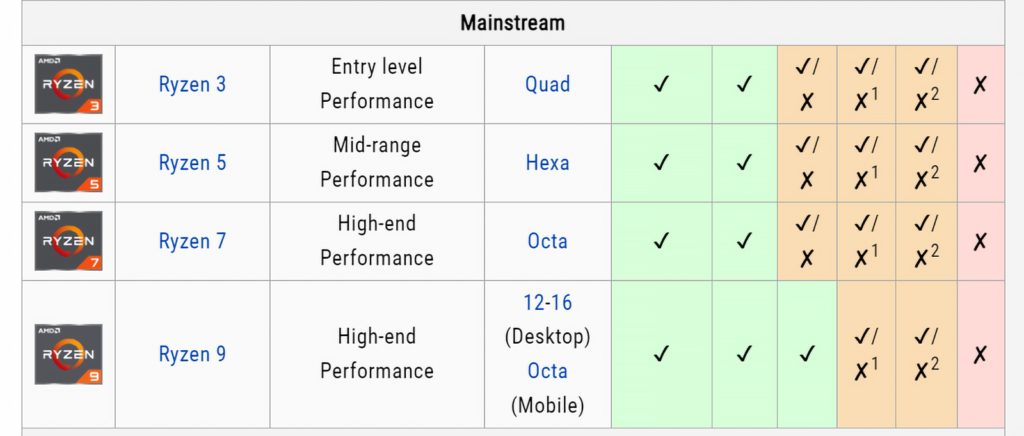
Firstly, let me clarify that while Zen 5 architecture is expected to launch soon, I cannot provide information about the CPUs launching alongside it or their features for now. So, let’s discuss the Zen 4 architecture for the time being.
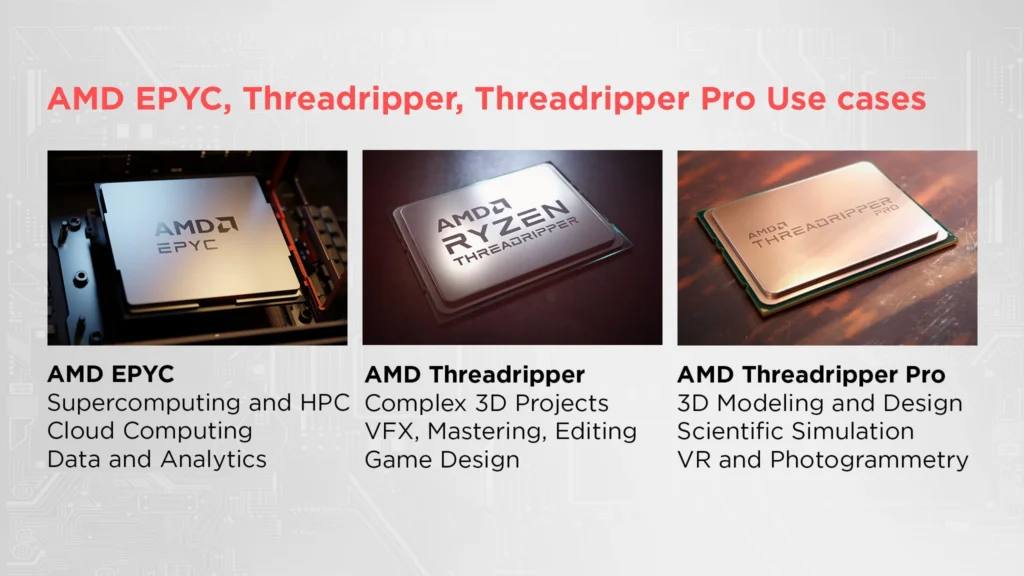
AMD’s Ryzen Lineup
AMD Ryzen CPUs were launched back in 2017 and are categorized into four groups: entry-level Ryzen 3 CPUs, mid-range Ryzen 5 CPUs, high-end Ryzen 7 CPUs, and enthusiast-level Ryzen 9 CPUs. AMD already offers different CPUs for different types of users. If there’s a user whose needs exceed even Ryzen 9, there’s another tier available: Threadripper CPUs. If you need a drastic amount of core count and a huge number of threads, then Threadripper CPUs are definitely for you. Of course, the factor of cost comes into play here. Threadripper CPUs are quite expensive compared to Ryzen 9. If we differentiate Ryzen 9 and Threadripper CPUs based on price-to-performance ratio, Threadripper processors can be considered akin to Ryzen 11 in terms of performance.
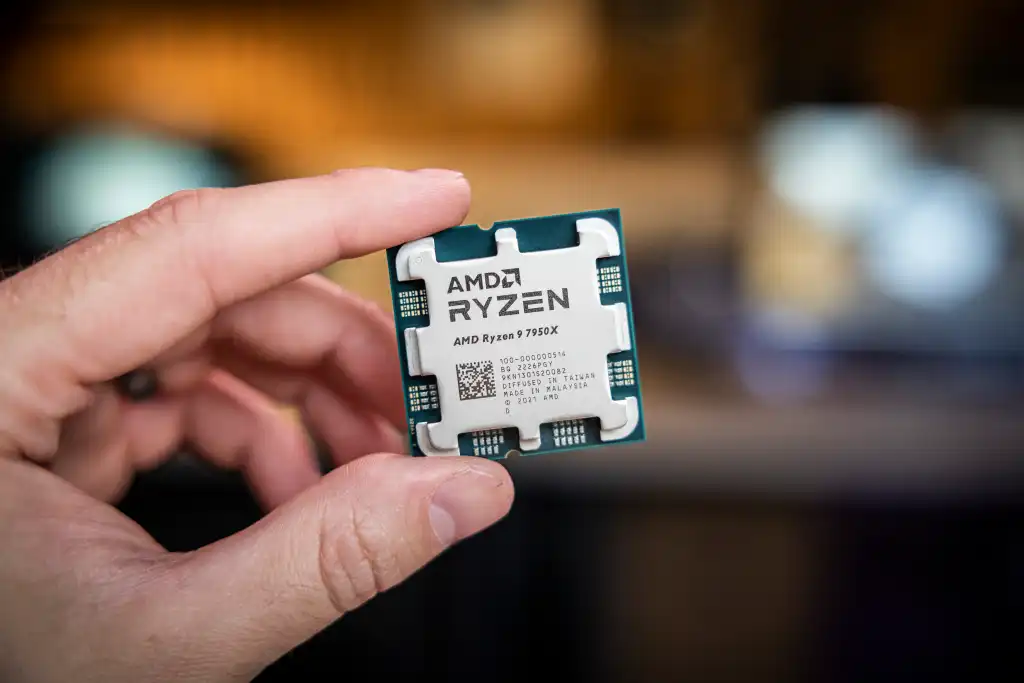
AMD Ryzen Threadrippers & Socket
However, in reality, it’s not that simple. Mainstream Ryzen CPUs share the same CPU socket, ranging from Ryzen 3 to Ryzen 9, all working on either the AM4 or AM5 socket. But Threadripper CPUs do not work on the same socket; they have a completely different socket. Older Threadrippers with Zen 2 and Zen 3 cores use a special socket called STRX4, while Threadrippers with Zen 4 cores use the STR5 socket. For example, the Threadripper 7980X. So, you need to keep in mind that if you plan to change your processor in the future, you may need to purchase a new motherboard.

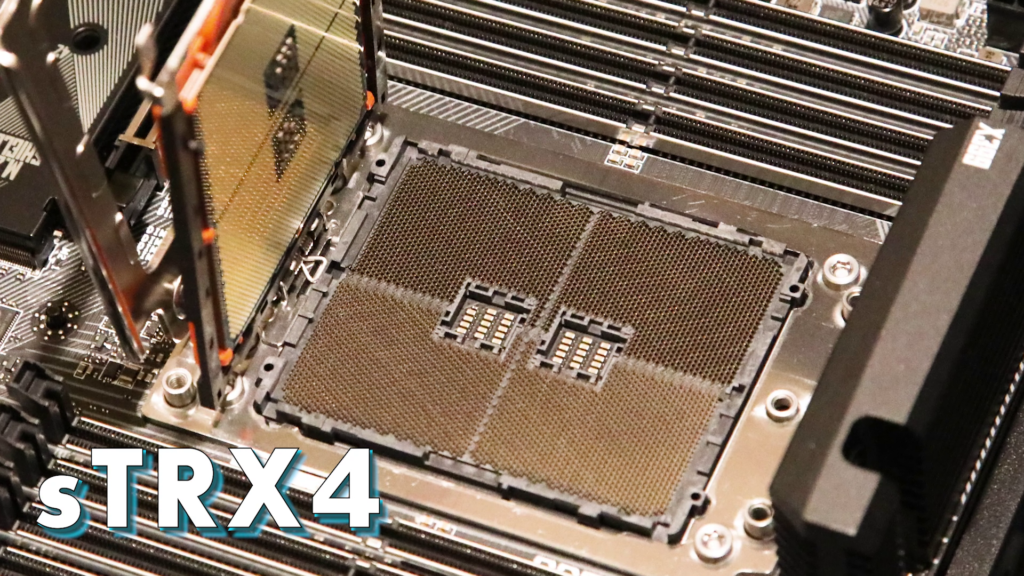
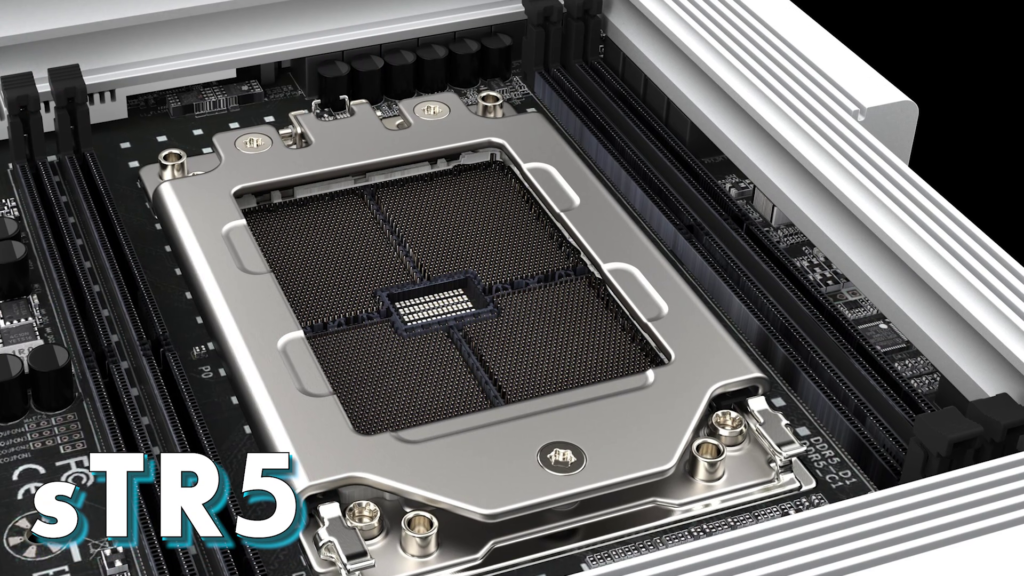
AMD Epyc Processors & Socket Type
Now, let’s talk about our Epyc CPUs. You’ll find the same architecture as in Ryzen and Threadripper, but Epyc CPUs are specifically designed for use in servers. Epyc CPUs have a higher core count for better multitasking and lower clock speed for better stability, along with other features that are useful specifically in server environments.
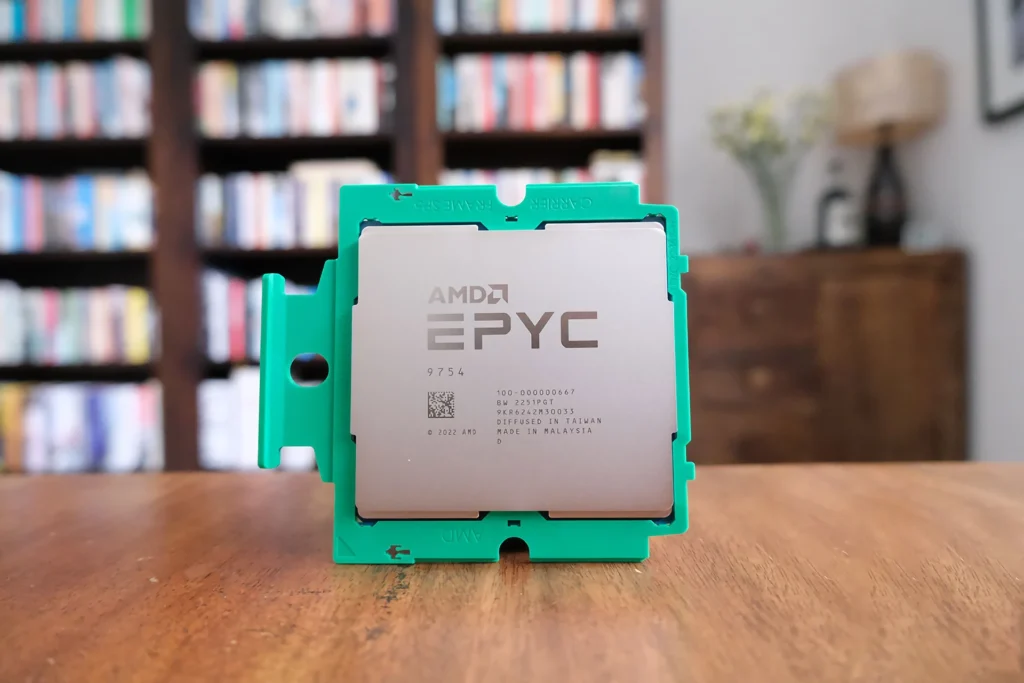
An interesting point is that Epyc CPUs won’t fit into Threadripper CPU sockets or the sockets used by mainstream Ryzen CPUs. The new generation of Epyc processors uses the SP5 socket. For example, the Epyc 9754 and 9654. The Epyc 9754 “Bergamo” is based on Zen 4C cores and is the latest Epyc processor. Its previous generation, the Epyc 9654 “Genoa,” also uses the same SP5 socket with Zen 4 cores.
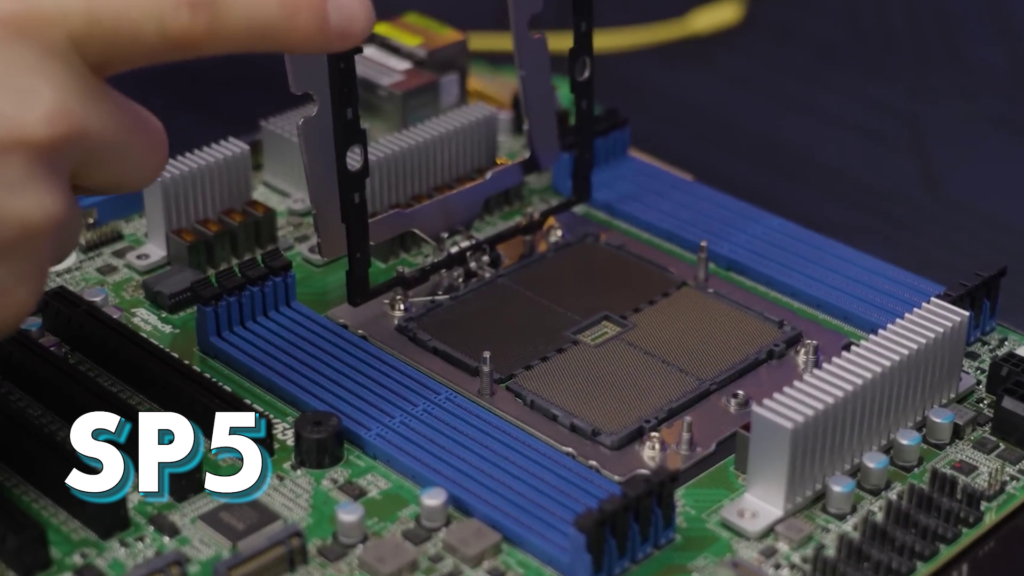
Threadripper Pro Processors
Between Epyc and Threadripper lies the reliance on Threadripper Pro processors. If you want to build a workstation-grade machine, Threadripper Pro processors can be one of the best choices.

The Pro lineup was first introduced with the 3000 series CPUs. Currently, the latest generation of Threadripper Pro processors uses the STR5 socket. For example, the 7995 WX. These processors have high base and boost clocks and fall into the category of High-End Desktop processors.
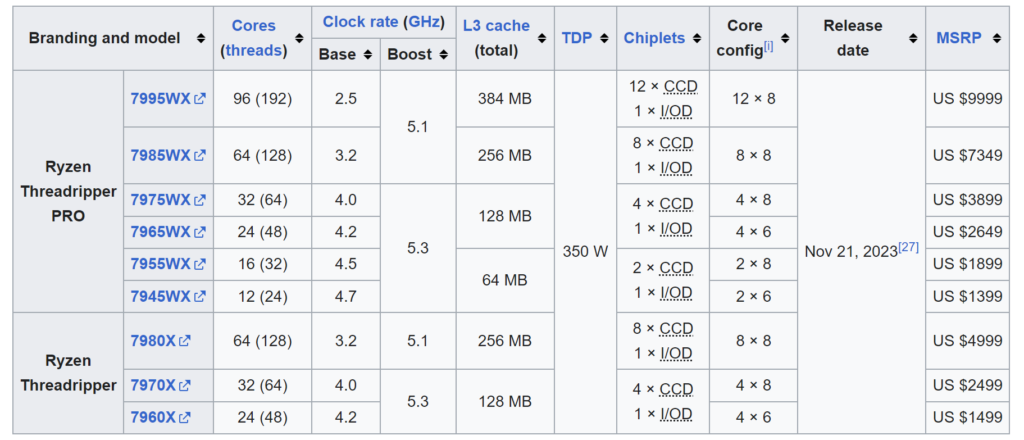
Threadripper and Threadripper Pro Chipset Mess
Threadripper and Threadripper Pro processors also have different chipsets. To be honest, there’s quite a mess here. Let’s focus on the latest information. In the Threadripper lineup, there are the 7000 Series, which are normal Threadripper processors, and the 7000 WX series, which are Threadripper Pro processors. Currently, there are two chipsets available for the Threadripper lineup: WRX 90 and TRX 50.
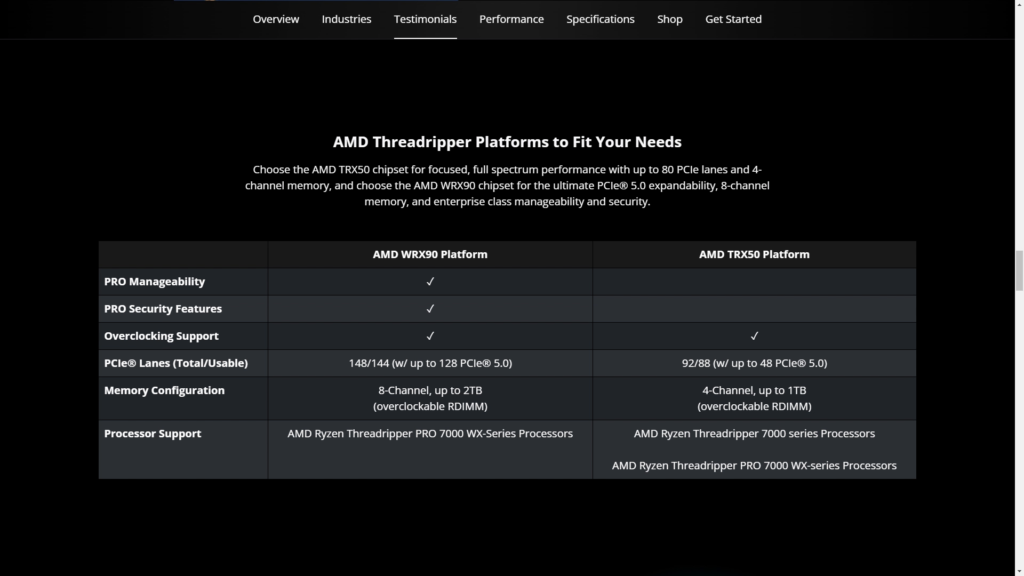
WRX 90 is a top-notch chipset that provides all Pro features such as Pro manageability, Pro security, 128 lanes of PCI 5.0, and 8-channel memory support. On the other hand, TRX 50 doesn’t offer features like Pro manageability and Pro security. It only has 48 lanes of PCI 5.0 and supports quad-channel memory. WRX 90 supports only the 7000 WX series, but TRX 50 supports both the 7000 WX and 7000 Series processors.
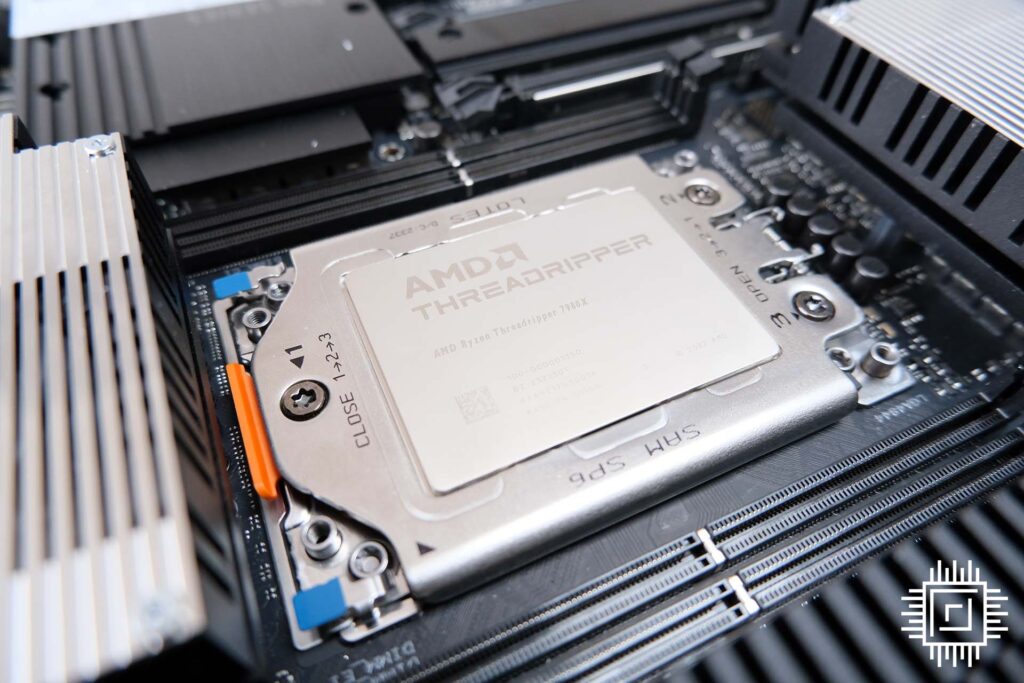
In simpler terms, you can’t use general Threadripper processors like the 7980X on the WRX90 chipset. The socket is compatible, but the processor won’t work. However, on the TRX50 chipset, you can use both the Threadripper 7980X and the Threadripper Pro 7995 WX.
Epyc Processors Don’t Need Chipset
When it comes to chipsets, it’s worth noting that Epyc processors don’t require dedicated chipset motherboards. The chipset is integrated into the processor itself, allowing Epyc processors to work together in a single motherboard with multiple processors. We can connect two processors in a single motherboard.
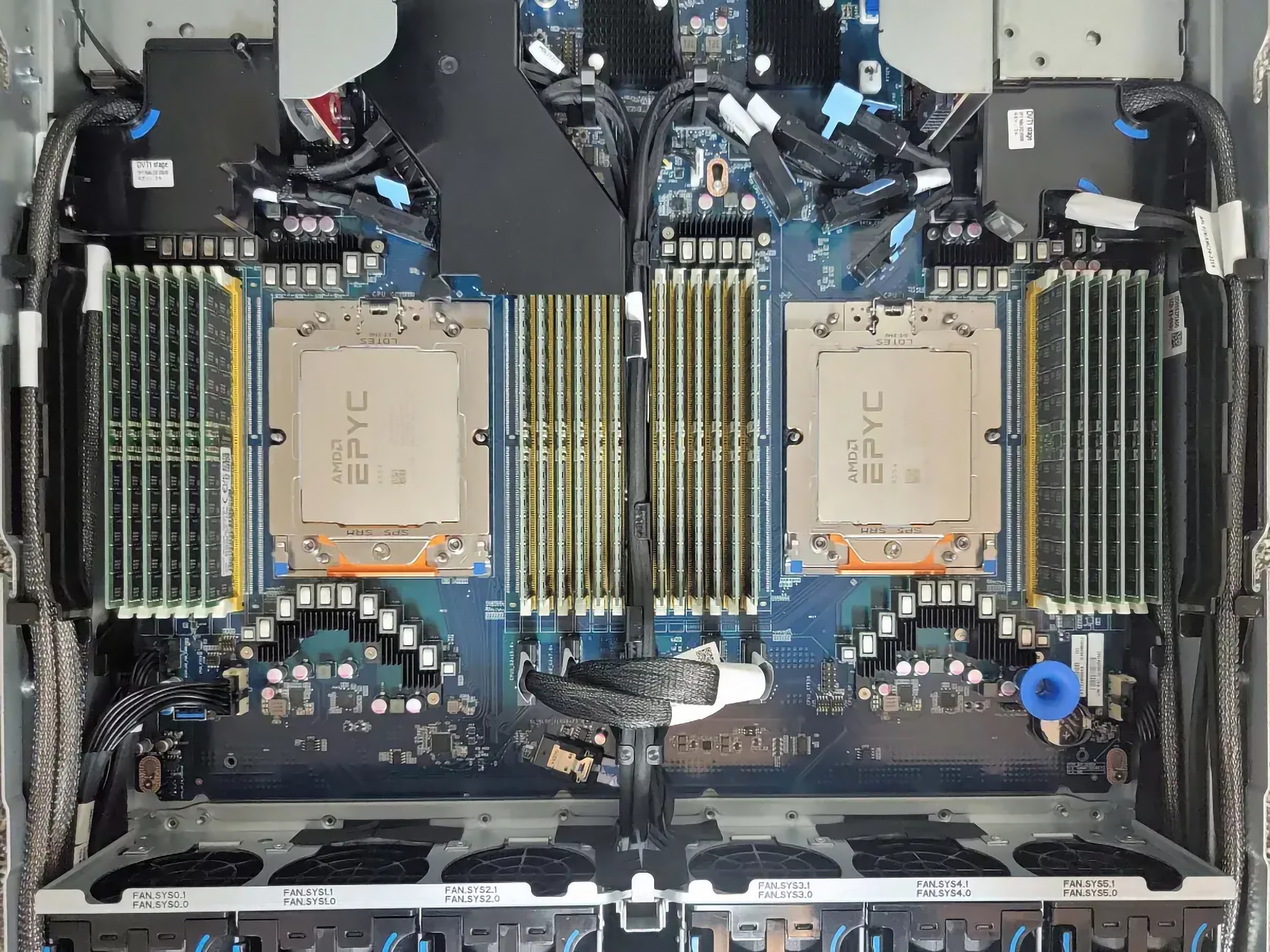
Threadripper Vs Threadripper Pro Vs Epyc Processors
Let’s compare these CPUs in terms of core count, cache memory, RAM support, and price. Core count is one of AMD’s most significant selling points. More cores generally mean better performance, making AMD processors easily marketable. High core counts have been a major reason for AMD’s dominance over Intel. However, for general users or gamers, excessive core counts may be pointless.
For users requiring over 32 processing cores and high RAM capacity, especially for workstation-grade performance in tasks like CFD, VFX, digital media creation, etc., Threadripper processors may be necessary. Epyc processors, on the other hand, are suitable for tasks like Ansys, AI, machine learning, scientific research, etc., requiring massive processing power and high RAM capacity.
Now you can ask, “What about Epyc processors?” They are for those whose work won’t be fulfilled even by Threadripper or Threadripper Pro, such as those who need to use Ansys at a high level, AI, machine learning, scientific research, design and simulation, weather forecasting, computational fluid dynamics, and other complex subjects that require a significant amount of processing power and high core count and RAM capacity. Epyc processors excel in such tasks. These are just a few examples.
For example, let’s consider the Epyc 9754 processor with Zen 4C architecture, offering 128 cores and 256 threads with simultaneous multithreading (SMT) enabled. It has a TDP of 360 watts, supports DDR5 memory with a 12-channel memory controller and a memory speed of 4800MT/s, and offers 128 PCI Express 5.0 lanes.

Compared to the previous generation Epyc 9654, the cache memory is slightly lower: L1 remains at 64 KB, L2 at 1 MB, but L3 has decreased from 384 MB to 256 MB. The price may surprise you at $11,900 USD.
Threadripper CPUs are also not cheap. For instance, the top-notch 7980X processor is priced around $5,650 USD. It offers 64 cores, 128 threads, supports up to 1 terabyte of DDR5 RAM in a quad-channel configuration, and has a total of 48 PCI Express 5.0 lanes. It has a base clock of 3.2 GHz and a boost clock of 5.1 GHz. In terms of memory speed, Threadripper offers 5200 MT/s. The TDP is slightly lower at 350 watts compared to Epyc processors.
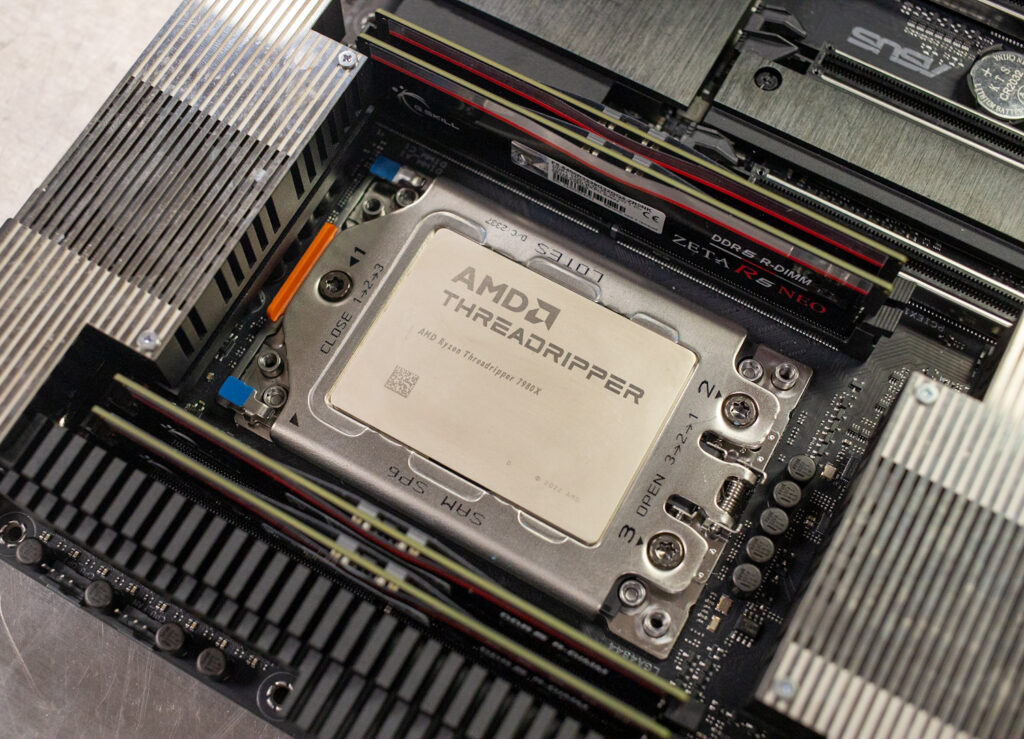
Let’s talk about the Threadripper Pro 7995 WX. It boasts a total of 96 cores and 192 threads, with a base clock of 2.5 GHz and a boost clock of 5.1 GHz. This processor supports 8 memory channels in DDR5, with a total RAM support of up to 2TB. It also features 128 lanes of PCI Express 5.0. The price for this processor is approximately 1,032,000 INR.
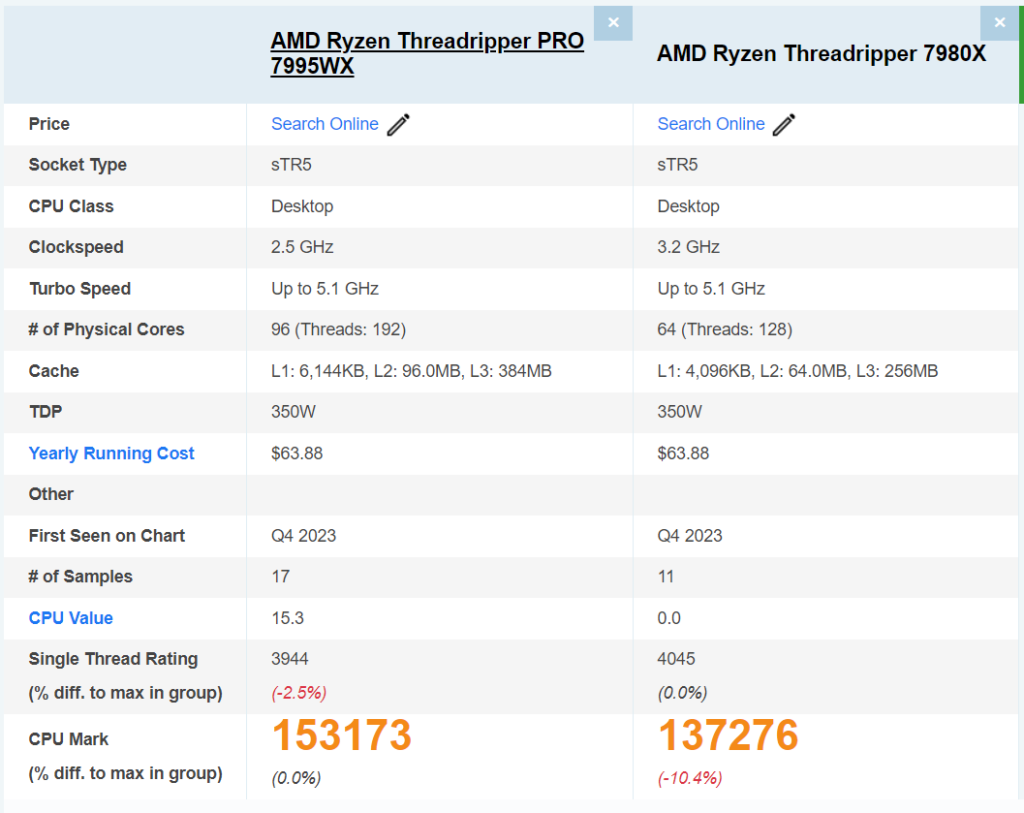
In the Concluding Lines…
In conclusion, choosing the right processor depends on your specific needs. If you’re using it for standard gaming, video editing, and rendering, Ryzen would be a great choice. However, if your work demands a high number of cores, then Threadripper might be the way to go. If your workload is more demanding that even a Threadripper can’t handle then you have the option of Epyc processors.
